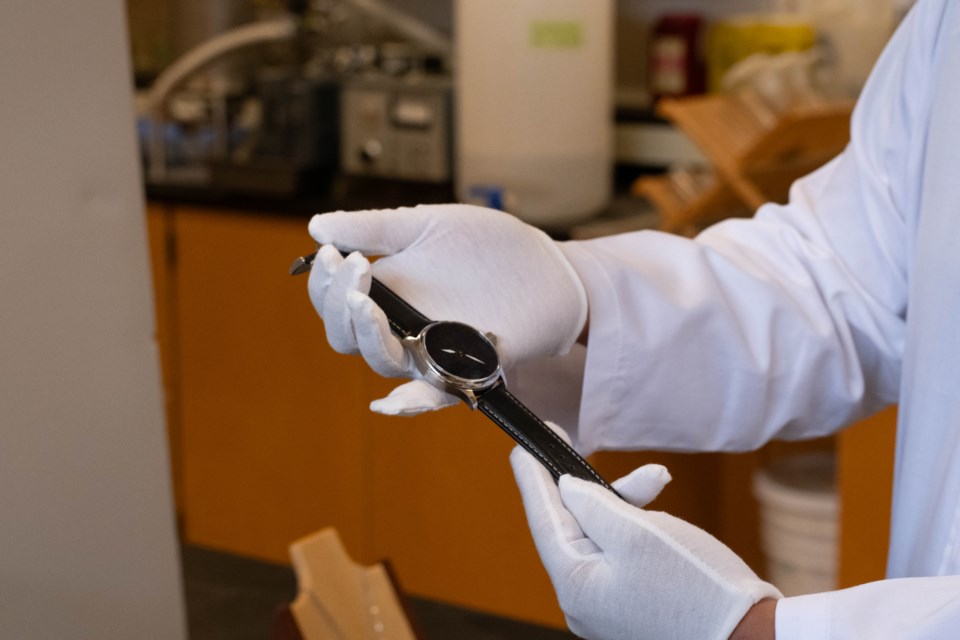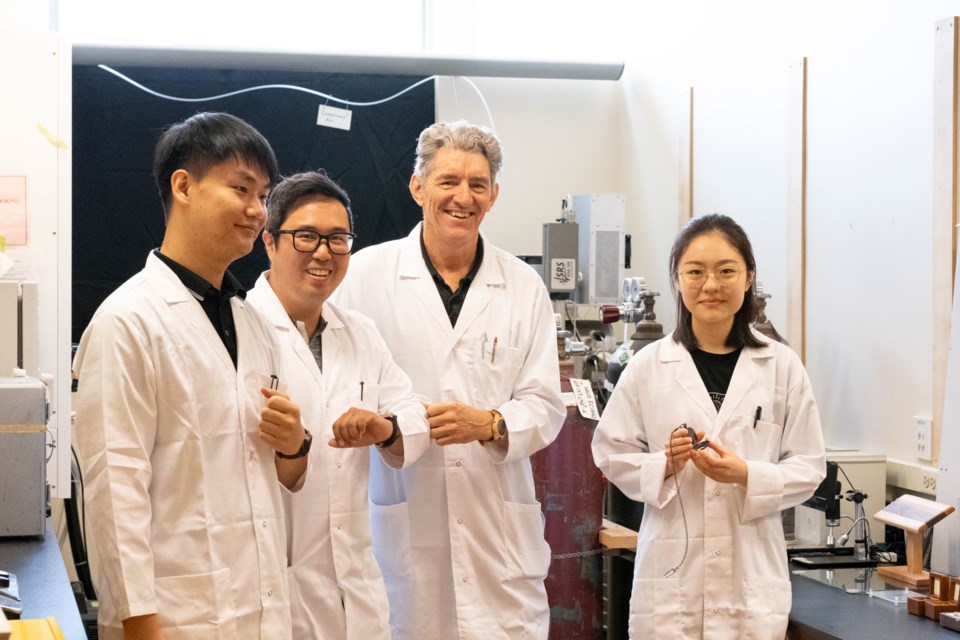Researchers with the University of BC’s Faculty of Forestry have formed a new company that makes watches and rings that use light-absorbing “super-black” material that was discovered by accident.
The material, called Nxylon, is made from basswood using plasma etching. It has the unusual property of being so black that it absorbs light like a sponge – something that could be useful in optical instruments like telescopes, where light reflection needs to be reduced to nearly zero and in solar panels.
The material was made quite by accident.
Philip Evans, professor in UBC’s Forestry department and head of Advanced Forest Products Manufacturing Technology lab, said he and his research team were experimenting with plasma etching in wood to try to mimic the water-shedding properties of the lotus leaf.
Plasma etching is typically used in making semi-conductors. But Evans and his team were using it on wood to create surfaces that mimic the surface of the lotus leaf in an attempt to make wood more water resistant.
When they tried the technique on the end grain of wood (i.e. where the wood has been cut by a saw), it turned out the plasma etching turned the wood black. Not just back, but super-black.
“It was so black, I’ve never seen anything like it,” Evans said. “We had no commercial ends in mind at that time.”
Evans and his lab sent the material off to the physics and astronomy department of Texas A&M University to test the material for light absorption properties.
“They do all of the characterization of super black material for space telescopes and other high-tech applications where the black material collects stray reflections that might interfere with the optical imaging,” Evans said. “They came back to us and said, ‘you’ve got a super black material here.’”
Whereas black paint absorbs about 97 per cent of the light that strikes it, super-black material absorbs 99 per cent.
“The thing about super black materials is that they absorb virtually all the light,” Evans explained. “It’s a bit like a black hole.”
There are other kinds of super-black materials, including vantablack, which is made from carbon nano-tubes. Evans likes to tout the fact that Nxylon is made from a renewable resource.
The light absorbing properties of Nxylon may have utility in telescopes and optical instruments and, but it also has aesthetic value. Evans and his team have initially focused their efforts on using the Nxylon to make watch faces and black stones for rings, and have launched a new company called Nxylon Corporation of Canada.
“We’ve used various techniques to allow us to make really quite nice jewelry,” Evans said.

The company will need to address some challenges with Nxylon before there is a market for it in telescopes and other optical instruments.
“One of the issues with scientific instruments is that the material you use can’t give off gas,” Evans said. “It can’t release any materials or gases.”
But coating the material to reduce the release of any type of gases could reduce its light absorption properties, so until that problem is solved, the Nxylon team will focus on jewelry and other consumer products.
“Super-black materials have got a huge array of potential products they can be used in,” Evans said. “I suspect that the material we develop can mainly be used for consumer products – possibly also black tiles for home theatres – but probably not in delicate scientific instruments.”



